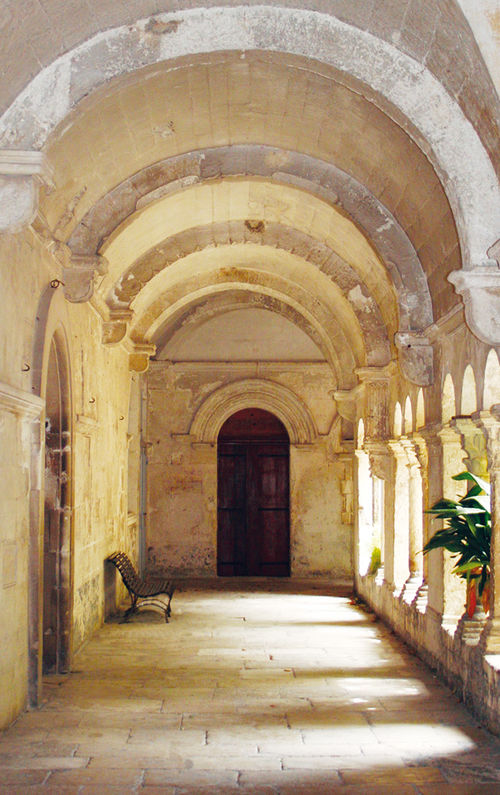
Where are They Now? Vincent van Gogh’s Hospital at Saint-Rémy
Vincent van Gogh’s Hospital at Saint-Rémy is on view at the Art Institute of Chicago for the exhibition Van Gogh's Bedrooms from February 14 to May 10, 2016.
It is a tale of madness, conspiracy, friendship, disease, jealousy, anguish, circumstance and over one hundred years of art historical intrigue. Upon voluntarily entering the psychiatric hospital of Saint-Paul-de-Mausole at Saint-Rémy in March 1889, did Vincent van Gogh know that he was embarking on the most prolific period of his career? Was he on the verge, even then, of being overtaken by the anguish and depression, the physical and mental imbalance that eventually led him to take his own life in July of 1890? The ethos, largely myth, of the isolated artist as tortured genius would lead us to write a story of Van Gogh precariously perched on the edge of madness. Historical retellings are occupied with the speculation that balancing his inner turmoil with the more stable world of his close brother, Theo, was essential to his artistry during this period.
Art historical intrigue aside, however, Van Gogh’s stay at the sanatorium was clearly inspiring to him, in part due to the stability it afforded after a period of great volatility in his family life, friendships, and personal health. In the months preceding his stay, he battled with his dear friend, Paul Gauguin, leading to the famous severing of Van Gogh’s left ear on December 23, 1888. The circumstances of this are, of course, also the stuff of legend. Some attribute the incident to an epileptic seizure, some to a bout of anger brought on by his metabolic condition, while others believe that Gauguin actually severed the ear, a fact that both artists are said to have conspired to cover up (1). Meanwhile, his brother and key support, Theo, was quickly entering a new phase in his life with his marriage in early 1889 and the birth of his child in January of 1890. Indisputable is the fact that over the course of the year he spent in his two rooms at Saint-Rémy-de-Provence, Van Gogh painted approximately 150 works, many depicting, in his typical impasto style, the grounds and interiors of the asylum. One of the more well-known works of this period, Hospital at Saint-Rémy is held in the Armand Hammer Collection of the Hammer Museum.

Ultimately, as is typical in pondering the work of great artists, we see clearly in the case of Van Gogh the enduring interest in his personal tribulations as well as the keen interconnectedness between the personal, environmental, and cultural circumstances of his art production. Opening on Valentines Day this year, the Art Institute of Chicago's exhibition will give visitors an unprecedented glimpse into the life of the renowned artist—exploring his work and life through his depictions of the various bedrooms and intimate spaces of his dwellings. Alongside the Hammer’s loan of Hospital at Saint-Rémy, the museum will present 36 works including journals and ephemera from this period. Key to the exhibition are three paintings of his room at Arles that when examined together allow the viewer to ponder the meaning of differences and similarities between the works, the same intimate space painted in three varied mindsets and time periods.
Van Gogh’s Bedrooms will be on view at the Art Institute of Chicago’s Regenstein Hall from February 14 through May 10, 2016. The exhibition also includes a robust online portal to explore the work and life of the artist, as well as an Airbnb offering to stay in a perfectly reconstructed replica of his bedroom in Arles.
The Hammer Museum’s Armand Hammer Collection features works of art from the sixteenth through the twentieth century that reflect the interest and dedication of the founder of the museum. The collection provides and overview of the major movements of nineteenth-century French art, with works by such artists as Paul Cézanne, Edgar Degas, Paul Gauguin, Edouard Manet, Claude Monet, Gustave Moreau, Camille Pisarro, and Henri de Toulouse-Lautrec. Vincent van Gogh is represented by three important paintings, including Hospital at Saint-Rémy (1889).
1. This theory is advanced in a recent text by Hans Kaufman and Rita Wildegans, Hamburg-based art historians.








